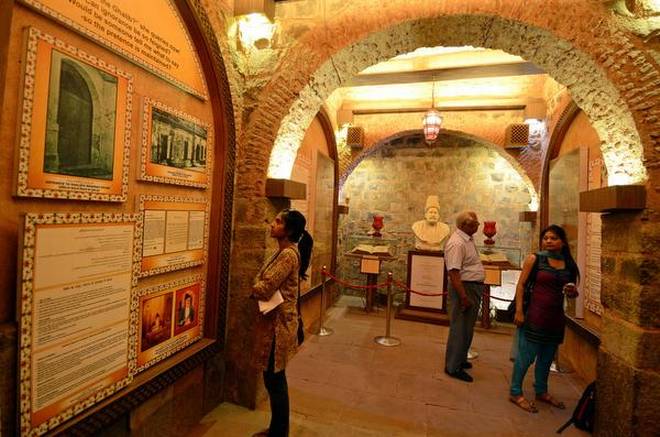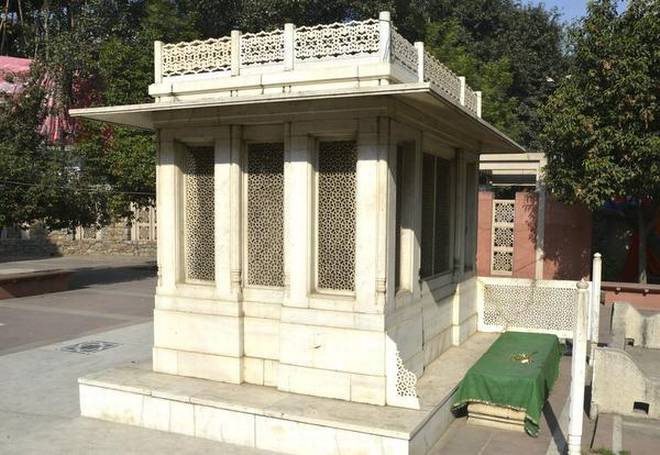Agra, UTTAR PRADESH / NEW DELHI :

We know Mirza Ghalib as a Dilliwallah, but the bard had a strong emotional connection with Agra as well
Mirza Ghalib’s death anniversary on 15th February did not evoke the same interest as his birth anniversary two months earlier. Of course, there was a literary festival in Connaught Place and another in India International Centre, one can say the 210th birth anniversary drew greater public attention than probably that of any other Urdu (or Hindi) poet. The haveli he lived in and the Town Hall were the main venues of the functions then, along with the Subz Burj Park in Nizamuddin, now named after him. But nobody thought of holding a function at Kala Mahal in Agra, where Mirza Nausha was born on December 27, 1797 and of which he was so nostalgic because of childhood memories. Just goes to show how possessive Delhiwallahs have become of Ghalib and of Mir Taqi Mir, who was not only born in Agra but also had an affair with his cousin in the vicinity of the Taj. An enraged family then shunted off the Mir to Delhi where he attained great heights before moving to Lucknow at the invitation of the Nawabi Court of Awadh, where his outdated attire provoked him to recite his famous introduction: “Dilli jo ek Shahr tha alam mein intikhab…/Jisko falak ne loot ke bezar kar diya/Hum rehne wale hain usi ujre dayar ke” (I’m a resident of the same looted garden, Delhi, devastated by heaven).
Incidentally, it was the Mir Sahib who had predicted that the boy Ghalib (whose early recitals he had heard) would one day become a big shair. But Yours Truly spent a whole afternoon in and around Ghalib’s haveli last week and wondered at the sudden twist of destiny that has brought it into the limelight again. The area of Ballimaran, of which Gali Qasim Jan is a part, got its name (there are other versions too) from the boatmen who once inhabited it. Thereafter, it saw a sea-change with the high and mighty deciding to build their havelis there. It is after Nawab Mir Qasim Jan, an Iranian nobleman, that the gali is named. Qasim Jan at first lived in Lahore, where he was attached to the court of the Governor, Moin-ul-Mulk, in the 1750s. That was the time when Ghalib’s grandfather also migrated to India from Turkey.
Qasim Jan was an influential man and a great friend of the Governor. But when the latter fell fighting Ahmad Shah Abdali, who had invaded Punjab, Qasim Jan helped Moin-ul-Mulk’s widow, Mughlai Begum, to rule the province in the name of her infant son. He seems to have been particularly close to the begum, who admired his sagacity. But the admiration was mutual for Qasim Jan could not have been immune to the charm of the begum who continued to defy Abdali despite losing her husband.
It was during the reign of Shah Alam that Qasim Jan joined the court at Delhi. He was conferred the title of Nawab, and in order to be close to the Red Fort built his haveli in Ballimaran. After the death of Qasim Jan, his son Nawab Faizullah Beg resided in the haveli. Ghalib also lived in Ahata Kale Sahib for some time after his release from debtors’ prison and that is the time he is said to have remarked that after being an inmate in the “Gora” (white man’s) jail he had moved to Kale’s (black man’s) jail.
Ghalib subsequently moved to the haveli in Qasim Jan Street. But during the First War of Independence of 1857, he lived for some time in Sharif Manzil where Hakim Ajmal Khan’s father used to reside. The reason was that Sharif Manzil was a protected place in those days because its owner was the personal physician of the Maharaja of Patiala, who was on good terms with the British. After the upheaval, Ghalib went back to his house, where his wife Umrao Begum held sway and made it into a virtual mosque.
However, there is still a mosque next to Ghalib’s house. An old bearded man, wearing a brand new sherwani and with a stick in hand, was standing next to it. Asked if Ghalib ever visited the masjid, he shook his head and declared, “I don’t think so, unless when he became old. What else can you expect from a man who wrote: ‘Masjid ke zer say ek ghar bana liya hai/Ek banda-e-qamina hamsaye khuda hai” (I have set up abode in the vicinity of a masjid so a wretch is now God’s neighbour). As one walked away after hearing him, the first “degh” of biryani was being opened by the roadside seller and the smell was too appetising to resist the temptation of tasting it. Ghalib too must have eaten like this sometimes or sent his faithful servant Kallu to buy the stuff.
Before settling down in Gali Mir Qasim Jan, Ghalib lived in the house of his in-laws, where several mushairas were held. Why they were discontinued at the haveli is not known but one reason may have been the opposition of his puritanical wife. So the mushairas the poet attended were generally the ones held at the Red Fort and Haveli Sadr Sadur in Matia Mahal. In Agra, of course, he was too young to take part in poetry recitation and instead flew kites with the son of Raja Chet Singh at Kala Mahal, where some claim that his spectre is still seen on moonlit nights. He, no doubt, missed Kala Mahal and the Redstone Horse at Sikandra, Agra, to which he always sent greetings through his friend Mirza Tafta Secundrabadi. The Ballimaran haveli somehow did not evoke the same nostalgia in him, probably because most of his children died in it in infancy. Wonder if he would have approved of the museum set up there! But at Kala Mahal fateha is still offered for his repose.
source: http://www.thehindu.com / The Hindu / Home> Society> History & Culture> Down Memory Lane / by R.V. Smith / February 26th, 2018









